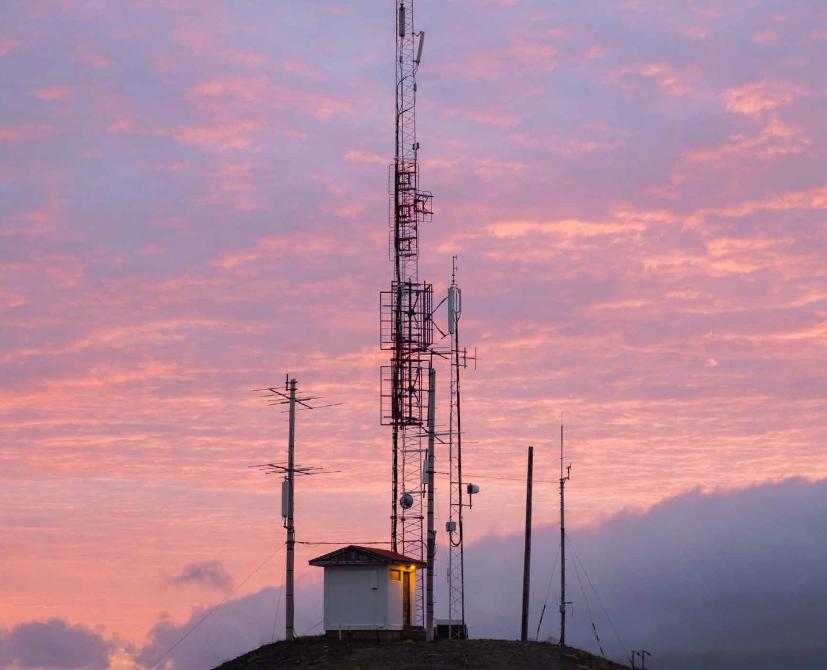
Iceland is no backwater, thanks largely to an innovative and forward looking business and entertainment sector supported by Síminn, one of the world’s most advanced telecommunications corporations.
Icelanders are a staunch breed of people, descendants of generations who built the modern state surviving famine, invasion, disease and political turmoil. No wonder that this small nation of a third of a million people on an island only 300 miles wide and 200 miles from north to south at its largest punches above its weight internationally. “We are travellers by nature,” says Anna Björk Bjarnadóttir. “We have had to be, because of our geographical isolation out here in the Atlantic.”
Anna is CTO of the country’s principal telecommunications operator Síminn, which has been linking islanders with each other and the outside world since it was founded as the Iceland State Telephone Service in 1906. That was the year Iceland ended its isolation and became linked by a telephone cable with the rest of the world via the Faeroes and Scotland.
Today telecommunications play a vital role in Iceland. Despite its limited population, penetration rates for network-related products and services are among the highest in the world. More than 95 percent of Iceland's households have a computer connected to the internet and demand for internet services is very high. “When it comes to broadband take-up I think we are number one in the world,” says Anna, adding that within the next 18 months 80 percent of households will be reached by fibre optic cable, something other countries can only dream of at present and a really ambitious programme across terrain noted for its seismic activity.
Síminn was privatised in 2005, since when it has operated in competition with other telecoms operators while remaining the incumbent, with responsibility for the fixed telecoms network, a network of more than 700 mobile base stations covering the entire country, and having a public service remit. A government financed programme over the last two years, for example, has seen the provision of a minimum 2 megabits per second (mbps) connection to every household, however isolated. “Even a farm far away in the west fjords of Iceland has a 2mb connection today,” she says. “We have implemented that using a number of different techniques: satellite, DSL and mobile solutions are all used.”
Staying in touch with each other and the rest of the world is very dear to the hearts of Icelanders, she says. “I think I can safely say that telecoms and connectivity are seen as a commodity here. During the recession it has been one of the last things they would give up or cut back on when things got tight.” That’s reflected in the high take up of ‘on the top’ services like Wi-Fi and VOIP solutions for making calls overseas. With travel in their blood, Icelanders have become avid digital travellers, too, she says. “Of course no country is completely isolated these days but we do need to be innovative and think out of the box a lot of the time just to function out here!”
This is reflected in the data revolution that is now sweeping Iceland but which depends on bandwidth to power it. The focus at present is to complete the fibre network being installed, however the Post & Telecoms Administration (PTA) in Iceland is about to issue licences for 4G mobile bandwidth and Síminn is preparing its bid to ensure it retains its nationwide coverage. In fact the jump from 3G to 4G is not as radical as the introduction of 3G a decade ago, which saw the jump from voice-only to mobile data communications. What 4G brings to the party is more mbps and greatly enhanced connection speeds. “You will get more stuff faster than before,” says Anna.
This will be of more than incidental value to Icelanders, making it easier for them to pursue their chosen lifestyle of decamping to summer house colonies for long periods and working from home using laptops and mobile devices. The flexibility offered by tablets and smartphones is only as useful as the infrastructure that supports them, however. Síminn’s existing 3G provides up to 21 mbps currently, but 4G can support up to 100 mbps connectivity, she says.
Faster mobile broadband will certainly make life better for visitors to the country, many of whom come to the annual Iceland Airwaves music festival, held in late October. Airwaves has become one of the world’s foremost showcases for new and alternative music after it launched in 1999. Since 2010 Síminn has been one of its principal sponsors, creating a mobile app that grows year by year. With more than 200 bands and performers taking part there’s a lot of congestion on the ground but the app gives real time information on queuing as well as full information about the performers and schedules. This year the app was downloaded more than 8000 times, which accounts for more than 2 percent of the population, and in five days it generated more than 1.4 million page views.
A similar app was developed for the Landsmót hestamanna international horse festival which attracts even more people than Airwaves—20,000 visitors come from all over the world to compete as well as to buy and sell horses. This is a very different clientele; older and more traditional, nevertheless the app was downloaded by 2000 users and achieved more than 70,000 hits during the festival. “Here in Iceland you have high technology usage among the older population.”
Last year Síminn took over an entire day’s issue of the country’s oldest newspaper and covered it with QR codes. By downloading an app and passing a smartphone over the paper, readers could access deeper information on anything from news stories to the weather, giving them an experience and access to technology that would still look futuristic in many other countries. At the same time it educated the business community to the marketing potential of QR codes; since that exercise codes have been added to sites of interest all over the country so that visitors can find out what they need to know and at the same time get to appreciate the value of having great 3G coverage in remote parts of the landscape.
Síminn aims to be so good that it is a role model for the entire business community; and that’s not just an aspiration but borne out in countless programmes. Anna Björk Bjarnadóttir is passionate about the company’s CSR programmes, and chairs FESTA (the Icelandic Centre for Corporate Social Responsibility), a not-for-profit organisation founded in 2011 to help companies implement their CSR strategies, raise awareness about CSR and encourage related research in cooperation with Icelandic universities. Síminn is in a unique position to lead in this field: “We have specialities and knowledge that other businesses do not have and feel obliged to use that knowledge to support our society.” The company provides free communications services to around 30 charities and not-for-profit businesses that support disadvantaged people.
The CSR programme is not just about doing good for the less-well-off; it reflects fairness and equality within the company too, she says. “I think we have a good culture of treating our employees, colleagues, partners and vendors well. We have some way to go but we believe strongly that our social programme will be good for the company, employees and customers and the whole society.”
Written by John O’Hanlon, research by David Brogan
DOWNLOAD
 Simin-Europe-Dec12-Bro-s.pdf
Simin-Europe-Dec12-Bro-s.pdf













